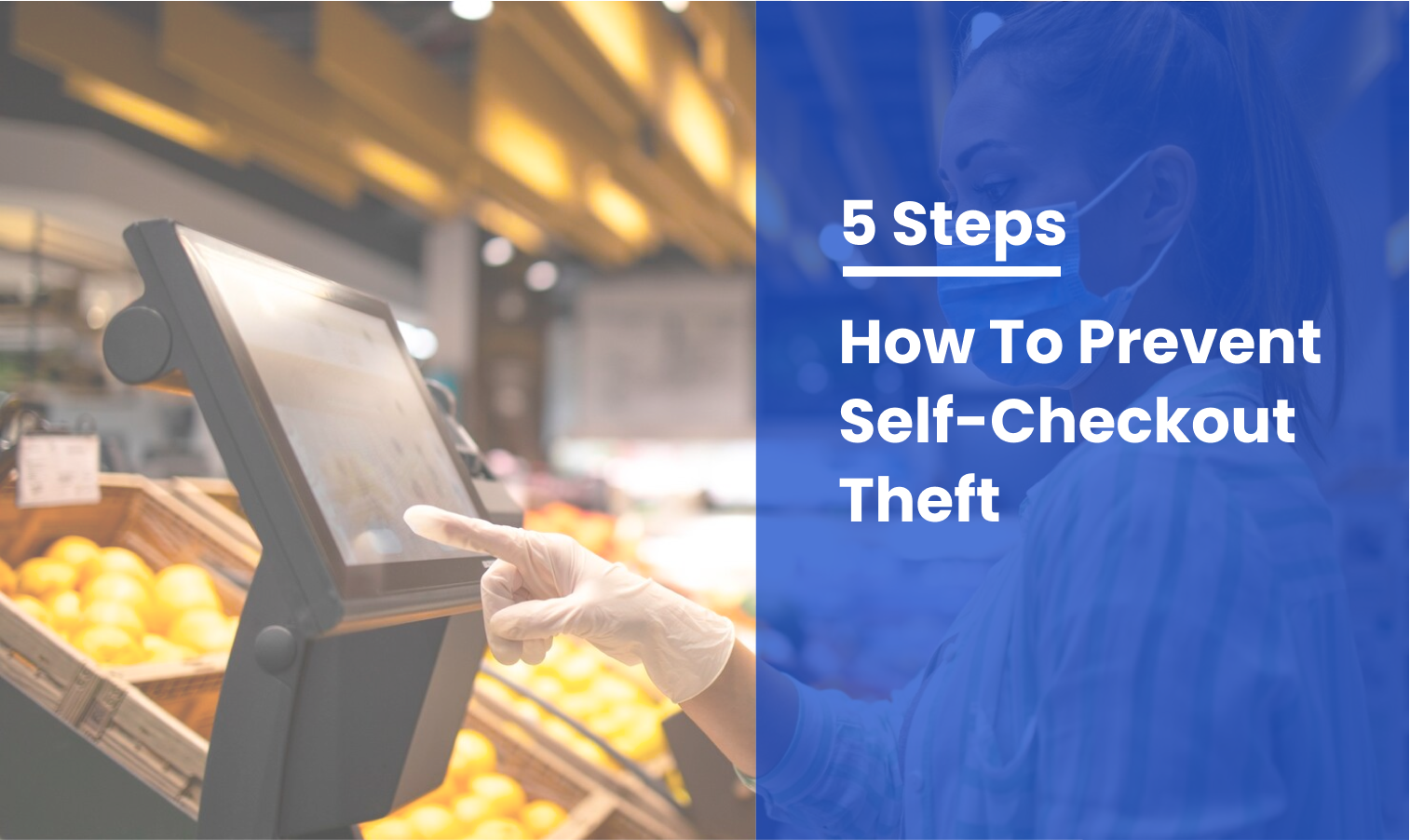How to Prevent Self-Checkout Theft: 5 Steps

Self-checkout theft has become a significant concern for small businesses in recent years. While these automated systems offer convenience to customers and operational efficiency for businesses, they also present an opportunity for theft and fraud. In this blog post, we will explore five crucial steps that can help you prevent self-checkout theft at your small business.
Invest in a Reliable Grocery POS System
The first line of defense against self-checkout theft is your Point of Sale (POS) system. Investing in a reliable and robust grocery POS system is the cornerstone of loss prevention. Look for features such as advanced security, integrated inventory management, and the ability to track individual transactions.
A good POS system not only facilitates smooth and efficient checkout processes but also helps in monitoring and identifying unusual or suspicious activities at self-checkout stations. It's the foundation on which you can build a secure and theft-resistant environment.
Implement Security Measures at Self-Checkout Stations
To deter potential thieves, you need to make it clear that your self-checkout stations are under surveillance. Here are some security measures you can consider:
Surveillance Cameras: Install security cameras above self-checkout stations, ensuring they cover all angles. Visible cameras act as a deterrent and provide crucial evidence in case of theft.
Mirrors: Convex mirrors placed strategically can eliminate blind spots and discourage potential theft. Thieves are less likely to act when they know they are being watched.
Adequate Lighting: Well-lit areas help in both deterring theft and identifying suspicious activities. Make sure your self-checkout stations are well-illuminated.
Train Employees to Monitor Self-Checkout Areas
Your employees play a pivotal role in preventing self-checkout theft. Train your staff to be vigilant and proactive in monitoring self-checkout stations. Check out our free guide to our self-checkout comparison chart here. Here's what they can do:
Greet Customers: Encourage employees to greet customers at self-checkout stations. A simple welcome can signal that someone is watching, discouraging potential thieves.
Offer Assistance: Train your staff to be available for assistance when needed. The presence of helpful employees can make thieves think twice.
Random Checks: Conduct random checks on receipts and bags to ensure that items have been scanned and paid for correctly.
Utilize Data Analytics to Identify Theft Patterns
Modern technology can be your ally in preventing self-checkout theft. Leverage data analytics and transaction monitoring to identify theft patterns. Your POS system should provide you with tools to track sales data, transaction frequencies, and unusual behavior.
Analyze this data to detect irregularities, such as an unusually high number of voided transactions or missed scans. Implement algorithms that can flag suspicious transactions in real-time, allowing you to respond promptly.
Perform Regular Inventory Audits
Regular inventory audits are essential to cross-check your sales data and ensure that items leaving the store match the transactions in your system. This step can uncover discrepancies and prevent long-term losses due to undetected theft.
Schedule regular inventory audits and ensure that your employees are thorough in their inspections. Use these audits to update your inventory records, identify missing items, and adjust your security measures as needed.
Conclusion
In preparation for the upcoming holiday season, retail grocers must fortify their operations to meet heightened customer demand. Successfully managing employee retention and payroll during these peak times is crucial for sustained efficiency and staff motivation. Strategic hiring, informed by accurate sales forecasts, and intelligent scheduling techniques are fundamental to optimizing labor resources without straining budgets. Offering competitive wages and performance incentives ensures the attraction and retention of quality employees. Investing in reliable payroll systems and fostering transparent communication about pay schedules are vital components of efficient payroll management. Creating a supportive work environment through regular check-ins and gestures of appreciation boosts morale amidst the stress of peak periods. Moreover, continuous training and cross-training programs enhance employee skills and flexibility, contributing to improved customer satisfaction. Finally, providing flexible scheduling options broadens the candidate pool, particularly appealing to students or those seeking temporary employment, offering a comprehensive strategy for navigating the challenges of the bustling holiday season.
In conclusion, a multifaceted approach encompassing strategic hiring, competitive compensation, efficient payroll systems, employee support, continuous training, and flexible scheduling positions retail grocers to thrive during the holiday rush. These strategies not only ensure smooth operations but also contribute to satisfied customers and a motivated, engaged workforce. By implementing these measures, retailers can navigate the challenges of peak season with resilience and set the stage for long-term success in the dynamic retail landscape. If you have any questions please reach out marketing@retailmetrix.io and let us know if you need some consulting.
-1.png?width=2600&height=450&name=RetailMetrixLogo%20(1)-1.png)
